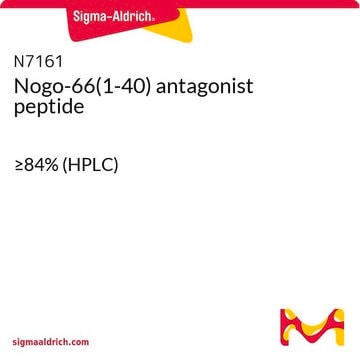MTOX1095
MRP5 Knockout Caco-2 Cells
human male colorectal tissue (Source Disease: colon adenocarcinoma)
About This Item
Recommended Products
product name
MRP5 Knockout Caco-2 Cells, one vial
biological source
human male colorectal tissue (Source Disease: colon adenocarcinoma )
form
liquid
technique(s)
drug transporter assay: suitable
permeability assay: suitable
application(s)
ADME/TOX
storage temp.
−196°C
Gene Information
human ... ABCC5(10057)
General description
Application
Transporter Function in Caco-2 Cells with Targeted P-Glycoprotein, MRP2 and BCRP Gene Knockout Using Zinc Finger Nucleases
Comparison of Function and Relative Transporter Protein Concentrations in Caco-2 Cells with Single and Double Knockouts of the ABCB1, ABCG2, and ABCC2 Genes
Caco-2 Transporter Knockout Cell Based Assays
Features and Benefits
- A functional knockout of the MRP5 gene eliminates the reliance on chemical inhibitors to determine if a compound is an MRP5 substrate
- The vial format enables the MRP5 knockout cells to be included in standard drug transporter protocols
- Human assay with no interference from animal inhibitors
- Overcome the limitations of RNAi and knockdown cell lines that arise from remaining transporter functionality
Legal Information
Disclaimer
Storage Class Code
10 - Combustible liquids
WGK
WGK 3
Flash Point(F)
Not applicable
Flash Point(C)
Not applicable
Certificates of Analysis (COA)
Search for Certificates of Analysis (COA) by entering the products Lot/Batch Number. Lot and Batch Numbers can be found on a product’s label following the words ‘Lot’ or ‘Batch’.
Already Own This Product?
Find documentation for the products that you have recently purchased in the Document Library.
Articles
We presents an article on The Role of Intestinal Efflux Transporters In Drug Absorption.
We presents an article on The Role of Intestinal Efflux Transporters In Drug Absorption.
We presents an article on The Role of Intestinal Efflux Transporters In Drug Absorption.
We presents an article on The Role of Intestinal Efflux Transporters In Drug Absorption.
Our team of scientists has experience in all areas of research including Life Science, Material Science, Chemical Synthesis, Chromatography, Analytical and many others.
Contact Technical Service






